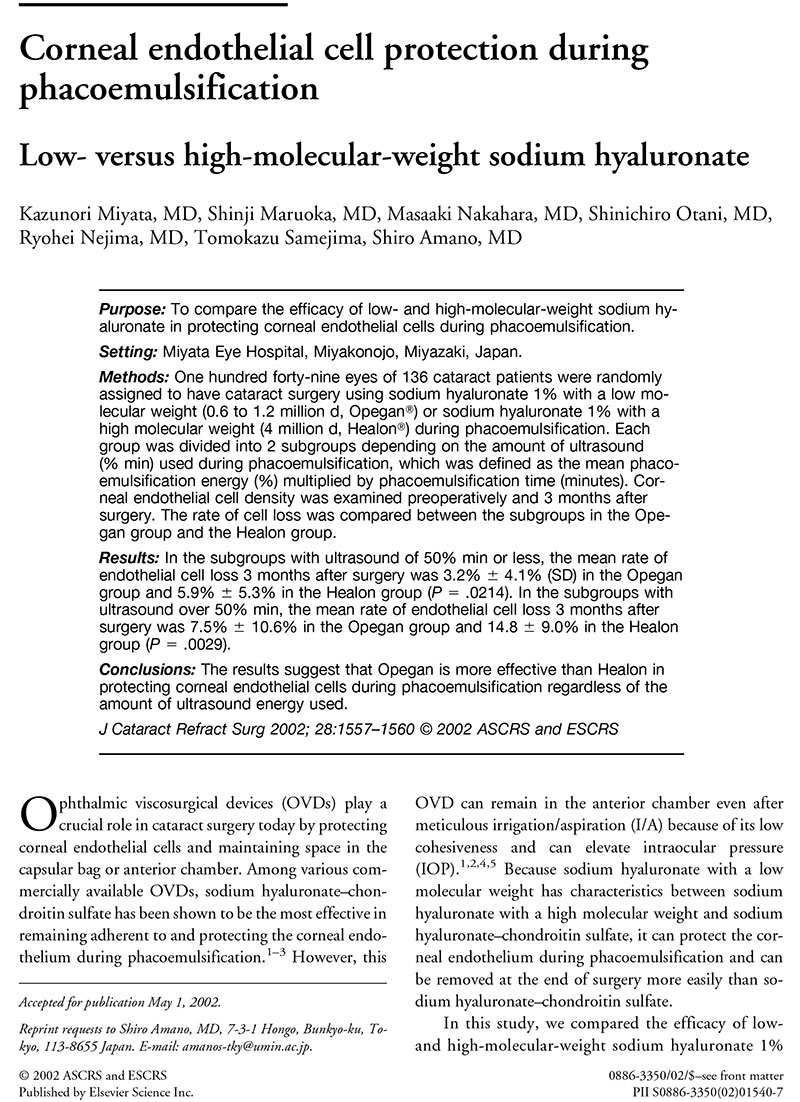Corneal endothelial cell protection during Phacoemulsification Low- versus high-molecular-weight sodium hyaluronate

Corneal endothelial cell protection during phacoemulsification low-versus high-molecular-weight sodium hyaluronate.
Article specifications
This clinical trial was published in 2002 in Journal of cataract and refractive surgery (IF 2015:2.72) by Japanese ophthalmologists. In this article 149 eyes of 136 cataract patients were randomly assigned to have cataract surgery using sodium hyaluronate 1% with a low molecular weight (0.6 to 1.2 million d, Opegan®) or sodium hyaluronate 1% with a high molecular weight (4 million d, Healon®) during phacoemulsification. Each group was divided into 2 subgroups depending on the amount of ultrasound (% min) used during phacoemulsification, which was defined as the mean phacoemulsification energy multiplied by phacoemulsification time (minutes). Corneal endothelial cell density was examined preoperatively and 3 months after surgery. The rate of cell loss was compared between the subgroups in the Opegan® group and the Healon® group.
Results
In conclusion, low molecular weight was more effective than high molecular weight in protecting corneal endothelial cells during phacoemulsification regardless of the amount of ultrasound energy used.
Tags: Japan J cataract and refractive surgery Clinical trial 2002
